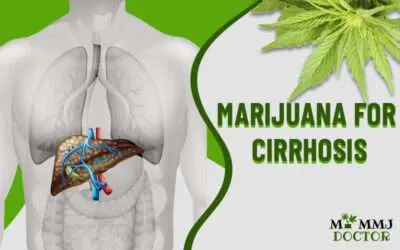What is Severe Arthritis? Symptoms, Causes, and Its Treatment

Arthritis is a prevalent disease but is not really well understood. Arthritis does not really refer to a single disease only. It is basically an informal way of referring to joint disease or joint pains, and there are more than 100 types of it and associated health conditions.
People of all ages can suffer from health conditions. Arthritis is the tenderness or swelling of one or more joints. The primary symptoms of the health condition include joint pain and stiffness that usually worsen with age.
What is Severe Arthritis?
Severe arthritis can lead to permanent joint changes. It can also result in an inability to perform daily activities and make it difficult to climb stairs or even walk.
While talking about arthritis, Rheumatoid arthritis is considered the most severe or most disabling type of arthritis.
However, Osteoarthritis is the most common type to handle. Let us get acquainted with both.
Osteoarthritis
Osteoarthritis includes wear and tear damage to the joint cartilage. Joint cartilage refers to a hard and slick coating on the ends of the bones where they form a joint. This cartilage cushions the bone’s ends and allows a nearly frictionless joint motion. But enough injury can result in bone grinding directly over the bone, leading to pain and restricted movements.
This wear and tear can generally take place over many years and can also be hastened by the infection or joint injury. It is the most common type of arthritis.
Rheumatoid Arthritis
In this type, a person’s immune system attacks the joint capsule’s lining, a tough membrane enclosing all the joint parts. This lining then becomes swollen and inflamed. And this disease process can even lead to destroying the cartilage and bone within the joint.
Rheumatoid Arthritis is often recognized as the most disabling type of arthritis.
Key comparisons between Osteoarthritis and Rheumatoid arthritis
| Parameters | Osteoarthritis | Rheumatoid Arthritis |
|---|---|---|
| Classification | Degenerative | Autoimmune |
| Definition | Osteoarthritis is a degenerative joint disease that is also known as wear and tear arthritis that is caused due to joint cartilage breakdown |
Rheumatoid arthritis is an inflammatory, chronic, autoimmune disease that majorly targets the joint’s linings but can also affect the other body parts |
| Effect | Cartilage loss | Joint lining damage |
| Prevalence | 30 million | 1.5 million |
| Gender Difference | None | More common in women |
| Age | Osteoarthritis is common after the age of 65 |
RA is most common in people between the ages 30 and 60 |
| Affect | Osteoarthritis begins in a single joint |
Multiple joints are involved in the Rheumatoid Arthritis |
Symptoms of Osteoarthritis
The most common symptoms of OA include
- Pain in the affected joint after repetitive activity
- Joint pain that is often worse later in the day
- Morning stiffness that lasts an hour or less
- Warming, swelling, and stiffness of affected joints after a prolonged inactivity
- Bony enlargements, bone spurs, and limited range of motion
Symptoms of Rheumatoid Arthritis
The common symptoms of RA include
- Joint swelling
- Joint pain
- Restricted range of motion
- Redness or warmth near joint
- Joint stiffness
- Morning stiffness lasting more than an hour
- Extreme fatigue
- Involvement of small joints of feet and hands
- Symmetrical joint movement
- Rheumatoid nodules
- Kidney, lung, or cardiac movement
Causes
Both the types have different causes, while the theories behind them are still under scientific investigation.
OA is thought to be solely caused due to the normal wear and tear or aging effects. However, other contributing factors may involve:
- Repetitive joint use
- Joint injury
- A family history
- Being overweight
Additionally, it has been figured out that the cartilage’s water content initially increases with the health condition while the cartilage’s protein composition steadily decreases.
This is believed to take place due to the imbalance in the body’s ability to repair cartilage since it deteriorates.
While talking about the RA, the cause is less understood. Researchers have worked for years and are still in progress to discover the abnormal autoimmune response cause. However, the standard theories point to the genetic predisposition combined with the other possible triggers like obesity or smoking.
Diagnosis of the Health Conditions
The diagnosis process for both types has a fair amount of overlapping. The physical examinations, medical history, and test results are all taken together to determine the health condition.
This includes
- X-rays of the affected joints can indicate the joint damage linked with both types.
- Arthrocentesis that includes the eradication and analysis of joint removal thal results in differentiating the type of arthritis
- Blood tests cannot definitively diagnose the health condition but may rule out the other conditions.
LAB Tests to diagnose
- Rheumatoid Factor
- C-reactive protein
- Erythrocyte sedimentation rate
- Antinuclear antibody
- Anti-CCP test
Treatments
Both types are treated differently.
The treatment for Osteoarthritis mainly focuses on pain relief and restoring the function of the affected joint. The common medications to reduce inflammation and pain include:
- Nonsteroidal anti-inflammatory drugs
- Steroid injections
- Analgesics
Other treatments include
- Physical therapies to strengthen and stabilize the joint
- Heat
- Bracing or support
- Weight reduction
While this was about Osteoarthritis, the treatment for Rheumatoid arthritis include
The primary treatment for RA is medications, and the five common categories that are used to treat the health condition includes
- Biologics
- Disease-modifying antirheumatic drugs
- NSAIDs
- Analgesics
- Corticosteroids
However, in severe cases, the last treatment option is surgery, including arthrodesis, arthroplasty, and arthrodesis.
Bottom Line!
Early diagnosis and treatments can help deal with the health condition as the treatments have come a long way. However, the first step to the road of feeling better is getting a proper diagnosis and getting your health evaluated by medical doctors.
“
Our Simple 3 Step Process For Medical Marijuana Card
1. Fill up your details in an easy 420 Evaluations form.
2. Get Evaluated by a Local MMJ doctor After Online Submission.
3. Get Approved and Receive your Recommendation In Your Email.
Looking To Apply For A Medical Marijuana Card?
Related Articles
Beyond the Buzz: Can Cannabis Cause Erectile Dysfunction?
Beyond the Buzz: Can Cannabis Cause Erectile Dysfunction![wpseo_breadcrumb][ez-toc]There is strong evidence that erectile dysfunction is a side effect of marijuana or weed use. In one study, 78% of men who reportedly experienced ED were frequent marijuana users,...
Discover Medical Marijuana’s Role in Pneumonia Recovery
Discover Medical Marijuana's Role in Pneumonia Recovery![wpseo_breadcrumb][ez-toc]Marijuana may help alleviate symptoms of pneumonia, but it cannot fully treat the condition. Moreover, it is important to remember that it is not a substitute for medical treatment....
The Role of Marijuana for Cirrhosis: Know The Potential Therapeutic Effects
The Role of Marijuana for Cirrhosis: Know The Potential Therapeutic Effects![wpseo_breadcrumb][ez-toc]The liver is a crucial body organ for over 500 vital functions, including metabolism, immunity, digestion, and detoxification. It comprises around 2% of an adult's...





very nice… i really like your blog!!! I was looking for something like that and found it here. Thank you!